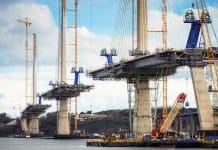As the government announces a consultation on onshore wind projects, Vicki Redman of Womble Bond Dickinson explores how local communities could benefit
The government’s consultation on onshore wind projects, which will run from this December and conclude in April 2023, has invited businesses, local authorities and communities to contribute.
It signals a reversal from Rishi Sunak, who previously opposed lifting the ban in favour of more offshore wind farm projects.
Proper integration of wind farm projects into the UK energy system is vital for net zero ambitions
Vicki Redman, UK energy partner at international law firm Womble Bond Dickinson, commented on the development: “Onshore wind will be critical to the UK’s energy transition, and for onshore wind to realise its full potential, it is paramount that additional barriers are addressed.
“There is still a need to upgrade the UK grid to support onshore wind in areas with a strong wind capacity. Also vital is the issue of funding and the question over whether onshore wind would be included within Contracts for Difference.
“Whilst challenges remain, the lifting of the ban puts the UK in a strong position to rejuvenate the onshore wind industry. There are huge opportunities for the UK manufacturing sector as historically, manufacturing for onshore projects has been delocalised in other parts of the world.
Lawrence Weston is an example of one such community to benefit from onshore wind
“There has already been success at a community-led level in the UK,” Vicki continued, “-an example of which is our client Ambition Community Energy (ACE), a community interest company founded by local resident-driven charity Ambition Lawrence Weston (ALW). The idea was pursued by a local resident, with support from neighbouring residents, local community groups and councillors.
“Planning for a 4.2-megawatt onshore wind turbine was granted back in November 2020 and at 150m it is believed to be the tallest onshore wind turbine consented in England. The project is expected to generate enough electricity to power around 4,000 homes per year and save over two tonnes of carbon dioxide annually.
“The site will also be home to a £1.7m community hub providing training, social support and debt advice whilst also hosting an Energy Learning Zone for schools and communities. WBD’s energy team advised ACE on the project, providing key legal expertise, including on a pro-bono basis, in relation to planning strategy, funding and environmental matters. The project positively demonstrates the appetite for solutions to the climate emergency at a local level.”
Local economies can gain investment, jobs and energy
“Community wind projects like this have huge potential to reduce the UK’s carbon emission. Indeed, we are seeing increasing evidence that communities do support onshore windfarms with community owned wind projects across the UK generating a total of 113 megawatts of electricity throughout 2021, according to research from The Energy Saving Trust, whereby community members take a direct and often significant financial stake in the project, meaning they reap the benefits of the electricity produced, as well as boosting the local economy through areas like job creation and attracting investment.
“It is the hope that projects like these and the aforementioned ACE example will provide a springboard from which community-led onshore wind projects can become a more frequent reality of the future.”














